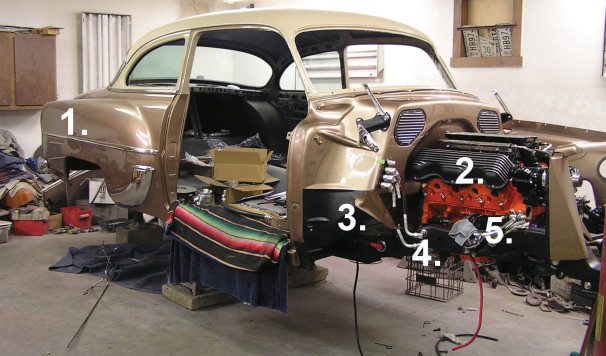A Checklist For AutoRepair Shops…

Garage Equipment Supplies
To keep one’s attention wholly focussed on one’s core business, it’s helpful to keep checklists of non-core issues that are, nevertheless, critical to the all-round progress of an automotive repair environment – one such checklist relates to health, safety and waste management compliance in the workplace and here is a list of the essentials:
1. Materials and Waste Storage & Management
Flammable and hazardous material in containers, tanks and cabinets should be properly stored and labelled as should chemical and material waste, such as metal filings; in some instances, specially demarcated – clearly-labelled as such – areas are required or, at the very least, a good idea, especiall7y when dealing with private car owners. Flammable liquids in big quantities should be earthed electrically and checks should be done periodically in the cases of spillage of chemical waste which, regardless should be cleaned up as soon as detected.
2. Premises
Fire regulations, firewalls, doors and hoses/extinguishers need to be checked regularly to monitor damage and service of items where necessary – a log should be kept of servicing and expiry of certificates where necessary – in larger operations, a regular fire drill and practice in the use of fire extinguishers/hoses is a good idea, particularly with regard to control of members of the public in the event of a fire or other crisis. Fire escape routes and emergency routes/exits should be clearly labelled with legible signage. Also, adhere, particularly in the workshop area, to cigarette smoking regulations. Fit-for-purpose electrical earthling and sealing of circuit boxes is imperative – frayed wiring or r insulated tape repairs are not acceptable. Remember, also to ensure adequate ventilation for carbon monoxide from exhaust system emissions. Good lighting is also essential.
3. Floors
Floor drains should be connected to a sewer or equipped with an approved oil-water separator or tight sump. Disposal of oil and other chemicals should be executed in an n approved fashion at designated waste disposal sites or via a specialist agent. Floors should not feature cracks that would allow environmental leakage of waste of spilled chemicals – floors, also, should be made of
non-combustible material, free of oil and grease, and sealed.
4. General Equipment
Underground storage tank and above-ground storage tanks should be legal and certified, waste oil receptacles should be of an acceptable standard.
Lighting fixtures are safe and always all fitted with the correct light bulb. Airconditioning units should be serviced regularly and in good working order.
5 Health & Safety
A fire drill procedure and escape routes and plans should be in place, a spill control strategy should be deployed, and MSDS (material safety data sheets) are freely available from suppliers and should be on record, with at least one of your representatives familiar with the safety implications as outlined thereon. Staff should be trained in emergency and evacuation procedure and there should be adequate bathroom facilities, especially in the event of a requirement for emergency eye/wound wash requirement.
6. Routine Car Maintenance
Drained waste fluids such as waste oil, antifreeze, and solvents should be stored in purpose-specific, separate drums or tanks and removed by a licensed transporter or to a designated waste management site, oil filters should be punctured and hot drained over a waste oil drum for the required amount of time, and then recycled or disposed properly. Oily shop rags should be placed in sealed, labelled metal containers and are managed properly.
7. Solvent Parts Cleaning
Solvent parts cleaner should be closed and a licensed transporter should collect and recycles solvents or disposes solvents as hazardous waste. Parts cleaners should be labelled with the material name and hazard type and, if a flammable solvent is used, the parts cleaner should have a fusible link that locks shut in the case of fire.
8. Exhaust System Repair
Ensure that welding/cutting is done in a well-ventilated area set aside for the purpose and up to specification with regulations. Compressed gas cylinders should be firmly installed by chaining and bracketing to a portable dolly or to the wall in an upright position. Fire extinguishers must be available in the welding/cutting area and employees should protective clothing and welding helmets with shields. It goes without saying that flammables are not used or stored nearby, electrical machinery should be earthed and local ventilation should be adequate.
9. Brake Repair (grinding drums and turning rotors)
Employees should wear safety glasses with side shields and equipment should be bolted into the floor. Pulleys on the grinder should be covered with a safety guard and the grinding wheel offset should be no greater than three millimetres.
10. Battery and Tyre Storage
Batteries are stored in a single layer on pallets or shelving with an impermeable base, and are properly recycled and tyres stored outside are covered and properly disposed of.
It would be a terrible pity if, having equipped your workshop with state-of-the-art equipment from Mr Equipment, something happened to render your business inoperable or worse, result in personal injury – our best wishes in the use of your new equipment.

